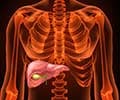Symptoms and Signs
Prune belly syndrome affects the urinary tract, the abdomen and the testes. Other organs like the heart, digestive tract as well as bones and muscles could also be affected.
Prune belly syndrome mainly affects three parts of the body – the abdomen, the urinary tract and the testes in males.
The abdomen: The abdominal muscles in children with prune belly syndrome fail to develop. The skin of the abdomen appears thin, loose and transparent enough to reveal the intestines inside. As the child grows older, the fat layer below the skin of the abdomen increases. As a result, the wrinkles flatten out and the abdomen shows a paunch and excessive flab. The child may have difficulty while urinating, suffer from constipation, begin sitting and walking late and have difficulty with coughing due to the lack of abdominal muscles.
The urinary tract: The urinary tract in normal individuals consists of two kidneys where urine is formed; the ureters, which are tubes through which the urine is carried; the urinary bladder which stores the urine brought through the ureters; and the urethra, through which the urine is eliminated from the body. In males, a part of the urethra is surrounded by the prostate, and is referred to as the prostatic urethra.
Abnormalities of the urinary tract associated with prune belly syndrome include:
- Massive dilatation of the ureters and the upper tracts
- A very large bladder
- A patent urachus or urachal diverticulum – The urachus is a tube that connects the bladder with the belly button or umbilicus in fetal life. As the fetus develops, the tube closes and forms a fibrous cord. Failure of the tube to close results in a patent urachus or urachal diverticulum
- Presence of vesico-ureteral reflux, that is, backward flow of urine from the urinary bladder to the ureters
- Dilatation of prostatic urethra
- Small-sized prostate
- Dilatation of urethra, resulting in megalourethra
- Rarely, urethral stenosis (or narrowing) or atresia (or absence), which leads to obstruction to the flow of urine
- Structural abnormalities of the kidney
Children usually have difficulty in emptying the bladder due to poor development of the bladder musculature or obstruction to the flow of urine through the urethra.
The testes: During fetal life, testes develop near the kidneys and then descend into the scrotum. In some cases, descent of the testes may take place after birth, but is unlikely after around three to six months of age. In the case of prune belly syndrome, the testes fail to descend into the scrotum and may be located in the abdomen. Incomplete descent, if untreated, could lead to infertility and testicular cancer.
Other abnormalities that may be associated with the condition include:
- Malrotation of the bowel
- Abnormalities in the heart
- Abnormalities in bones and muscles, including limb abnormalities and scoliosis or increased lateral curvature of the spine.
- In the female child, abnormalities in the urethra, uterus and vagina are often present.







